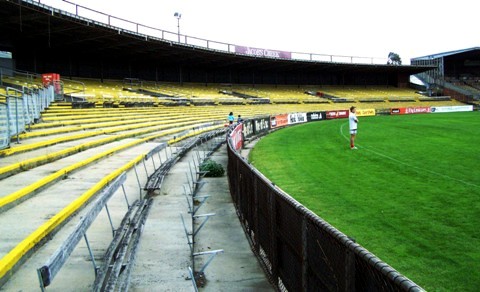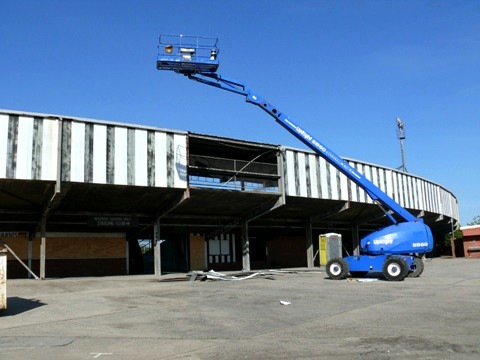

 |
||||||||||||||||||||||||||||||||||||||||||
|
|
||||||||||||||||||||||||||||||||||||||||||
|
Named after Collingwood champion Bob (Robert) Rush and opened in 1966, the grand stand was the first of its kind at a suburban football ground. At last covered seating and standing room for patrons in the 'outer' without large pillars obstructing the fan's view. Like every grand stand built at Victoria Park the R T Rush Stand was dramatically scalled back from it's original blue print which would have seen the structure sweep for over half the circumfrance of the oval, from the right of the Sherrin Stand (Which was yet to be built) to the very left of the Jack Ryder Stand and would have covered the famous, or infamous, 'One-Eyed Hill'. The sweeping R T Rush Stand would have had appeared as a slightly scaled down version of the MCG's Southern Stand. Nevertheless the R T Rush Stand was still a magnificent structure that provided hundreds of thousands of Magpie supporters shelter from the cold and rain at Collingwood games for thirty five seasons from 1966 to 1999.
2009 'remodelling' Heritage Victoria had protect almost the entirety of Victoria Park in 2007 thanks to the pressure applied to them and the City of Yarra by the Victoria Park Heritage Committee, Lesley Benham and Jack Hickey. However, the Yarra City Council still had the option to apply for permits to implement it's destructive Master Plan. Despite protests from the Victoria Park Heritage Committee the Yarra Council was given permission to demolish the entire grand stand, including large sections of the Turner Street wall, leaving just the lower terracing. The need to satisfy the whim of a handful of local residents apparently outweighed the enormous cultural, social and sporting heritage that the R T Rush Stand represented to many hundreds of thousands of Collingwood Football Club supporters. The fortress like nature of this unique sporting icon has forever been changed and not for the better.
|
|
|
|
|
| Site Map |
 The R T Rush Stand
The R T Rush Stand








